Pizzoccheri alla Valtellinese (baked buckwheat pasta)
Baked pizzoccheri alla Valtellinese is an unusual but delicious vegetarian buckwheat pasta dish from the town of Teglio in the Valtellina, a very beautiful and fertile valley in the Italian Alps. This is typical hearty and warming mountain fare, perfect for the cold season!
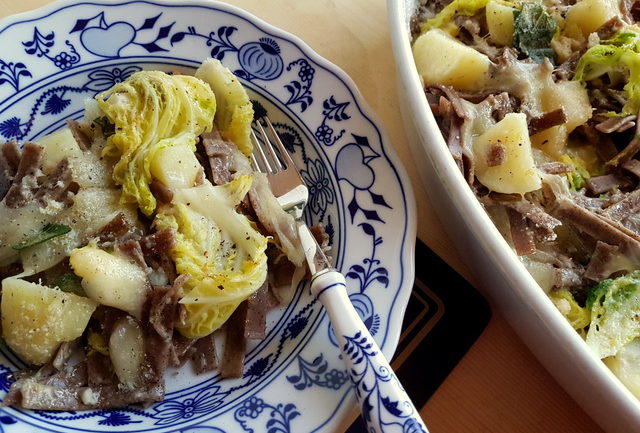
Pizzoccheri alla Valtellinese is a healthy pasta bake.
I think pizzoccheri alla Valtellinese is unusual for two reasons. Firstly, the pasta, pizzoccheri, is traditionally prepared with two-thirds buckwheat flour and a third durum wheat flour. The buckwheat is what gives it its grey/brown colour. Buckwheat is very healthy and rich in antioxidants and polyphenols. Industrially produce pizzoccheri may not have the same amount of buckwheat flour as tradition dictates. However, even twenty-five percent buckwheat produces a pasta which is not only healthier than other types but very flavourful.
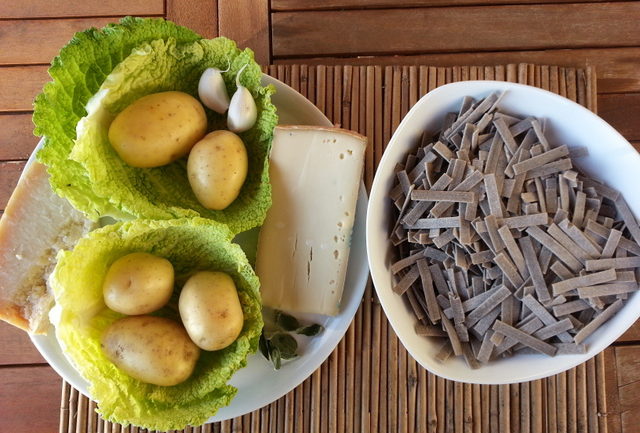
The other reason this dish is unusual is the inclusion of potatoes. Although there are a number of Italian pasta dishes with potatoes as an ingredient, they are more likely to be cooked at home than to be found on restaurant menus. Pizzoccheri alla Valtellinese, on the other hand, is the signature dish of traditional Valtellinese cuisine and is commonly on offer in trattorias and restaurants in the area.
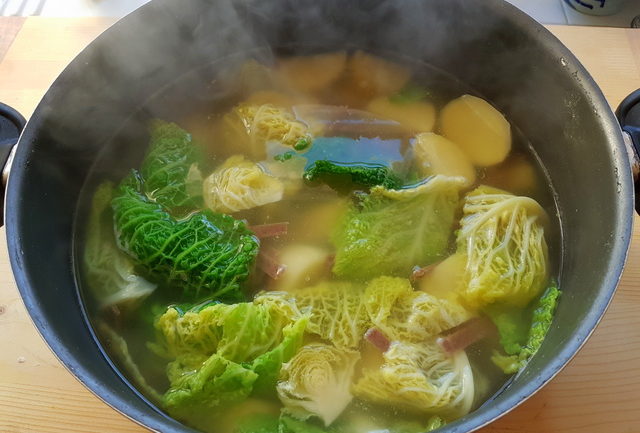
A warming winter dish.
I think of baked pizzoccheri alla Valtellinese as an Italian version of Swiss raclette because the recipe includes quite a lot of cheese. In fact, the predominant flavours, apart from the pasta itself, are cheese and potatoes. It’s also a winter mountain dish like raclette, which is normally eaten with potatoes.
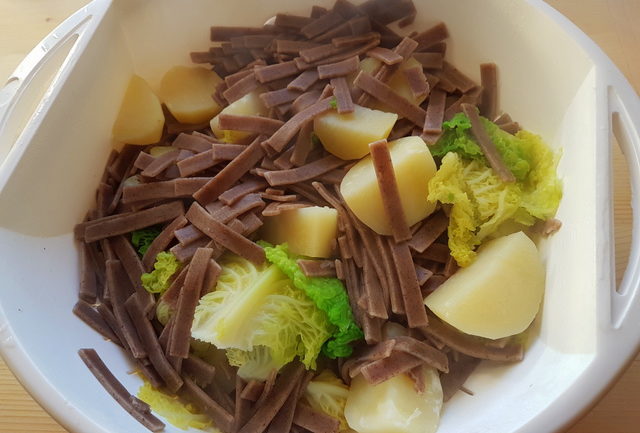
Although the seemingly simple ingredients of this pasta recipe may have you thinking it is a bland dish. You would be much mistaken. Actually it is really really good! The addition of lots of cheese and a good dose of butter, melted to a glorious frothy, golden garlicky brown, make this a tasty and satisfying dish. You won't even want dessert!
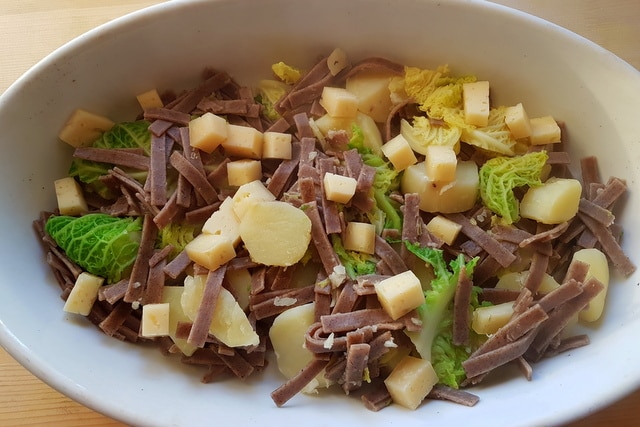
What kind of cheese?
The cheese traditionally used in pizzoccheri alla Valtellinese is either casera or bitto. Casera is a cow's milk cheese produced from milk that comes from herds in the Valtellina valley. It's produced according to a tradition that is hundreds of years old! Bitto is made from summer milk from herds grazing on the hills of the valley plus a small percentage of goat's milk. Both casera and bitto can be hard to find outside of Lombardy, the region where the Valtillena valley is located. However, you can replace them with fontina or gruyere. For my baked pizzoccheri alla Valtellinese, I used fontina.
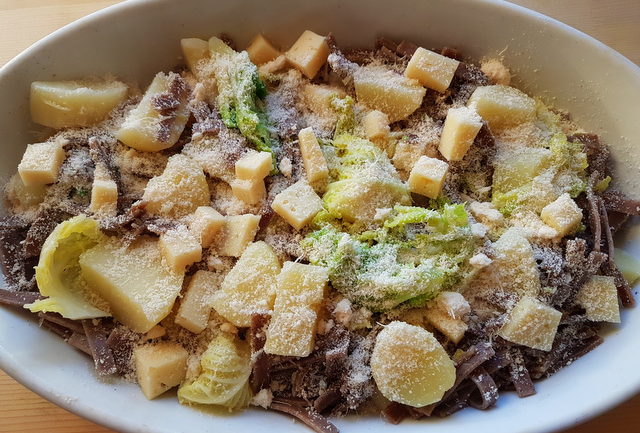
Some changes to the original recipe!
I must confess I made a couple of changes to the official pizzoccheri alla Valtellinese recipe. Yes, there’s an official recipe published by an organization called L’Accademia di Pizzoccheri di Teglio! My changes were based on other recipes I found and my husband’s partiality for pancetta! You can watch pizzoccheri being made in the Valtellina in this video from Pasta Grannies.
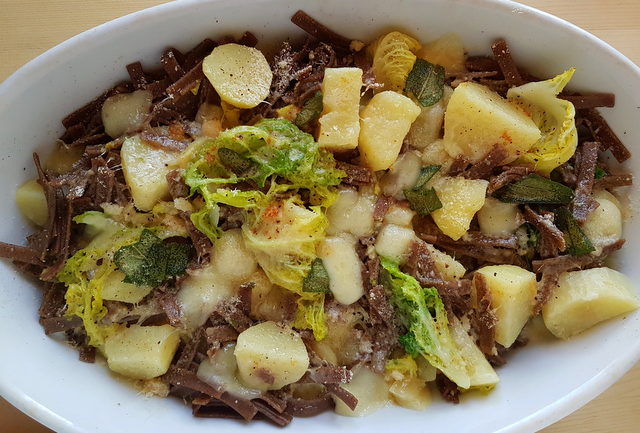
Firstly, I reduced the amount of butter and I added some sage to it because I love that salvia e burro combination. Plus, I baked the dish rather than serving it unbaked. Actually, I made two dishes. In one, I put pancetta at my husband’s request (not traditional and not vegetarian!)
The other, I left without (more traditional and vegetarian). The pancetta certainly gave it a different flavour, but I have to say I preferred the recipe without pancetta and more or less as it is intended to be. If you cannot find pizzoccheri, this recipe can also be made with other types of buckwheat or whole wheat pasta, short pasta or flat ribbons cut into pieces.
If you do try this baked pizzoccheri alla Valtellinese recipe, I’d love to hear what you think. Please write a comment here on the blog or post a comment on the Pasta Project Facebook page.
Your feedback means a lot to me!
Buon Appetito!
Pin for later.
This recipe was originally published in 2017 but has been updated.
Save this recipe for later?
If you want to save this recipe for later, you can print it, bookmark this page or save it to Pinterest.
Other warming pasta recipes here on The Pasta Project.
- Gnocchi alla Bava recipe from the Val d'Aosta
- Baked ziti or zitoni with spicy sausage recipe from Naples
- Cheesy baked pasta shells
- Baked Tuscan gnudi with tomato sauce
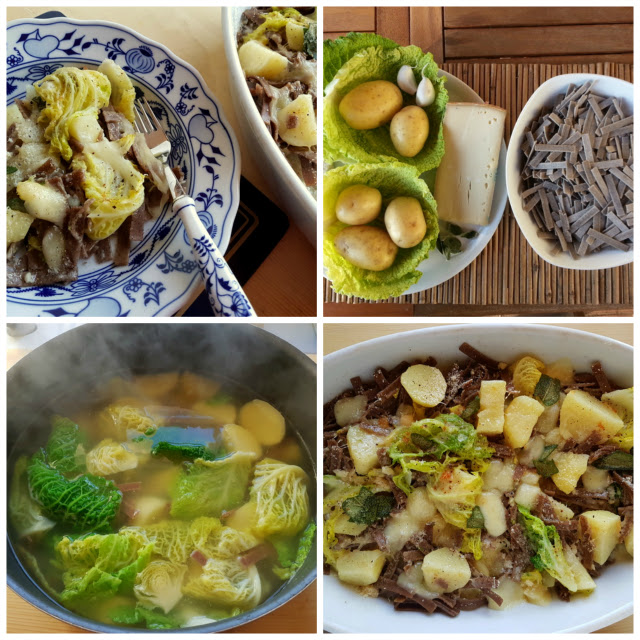
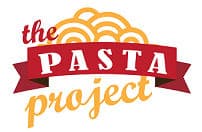

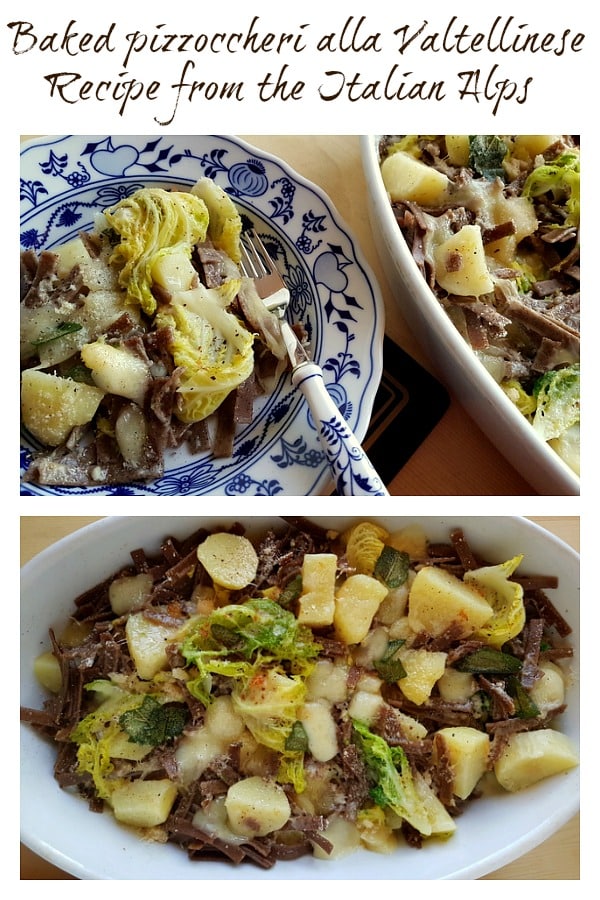
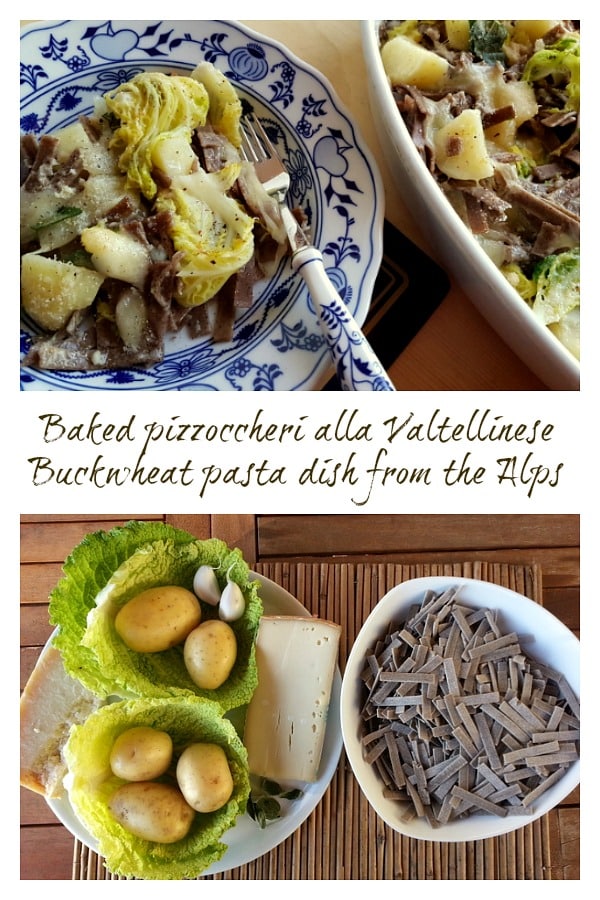
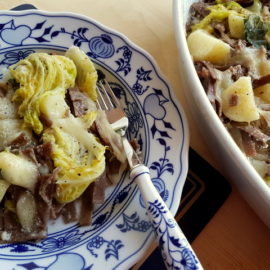
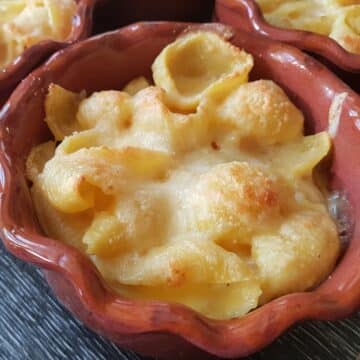
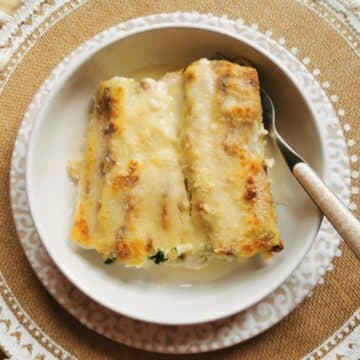
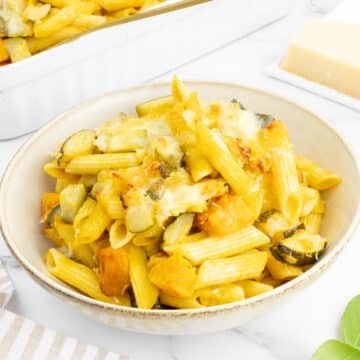
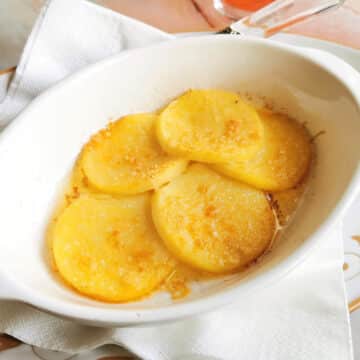
Jay Nelson says
Hello Jacqui!
This is a dish I make often, I sometimes have to make substitutions based on what I can get, but I've never had any of those minor variations unpleasant. I've also started using the Accademia del Pizzocchero di Teglio recipe and have found the addition of white flour doesn't dilute the buckwheat taste -- which I love.and I was reluctant to use.
This is a magnificent recipe that I think people the world over would enjoy. Thank you.
Best Recipes List says
Your Recipe caught our attention, so we added it to our list: 49 Best Italian Recipes
Thank you for sharing your wonderful recipe. Keep up the good work!
Christine Beveridge says
Hi Jacqui, I fell in love with pizzoccheri on our first visit to Chiavenna (north-west of Teglio, in the next valley up) to stay with our son-in-law's family in 2013. (I also fell in love with the Alps!) It's my favourite winter pasta dish. I make it at least once a winter here in Australia. I make my own buckwheat pasta and have to substitute another cheese for the casera or bitto. I usually use Gruyere, Jarlsberg, or Maasdam, as I can't even get fontina where I live. It's still good! I usually bake it, too, for those crispy bits on top! Love your recipes. Keep up the good work!
Lathiya says
I l=just love how easy this recipe is and flavorful too. Delicious share.
Jacqui says
Thank you Lathiya! Yes this baked pizzoccheri is pretty easy and really delicious!